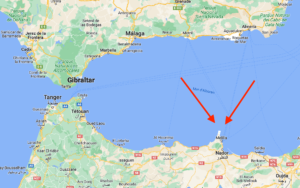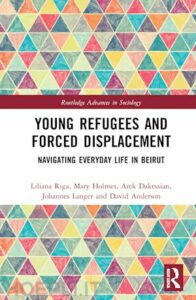Share
« Le 20 éme siècle nous aura appris qu’aucune doctrine n’est, par elle-même, nécessairement libératrice, toutes peuvent déraper, toutes peuvent être perverties, toutes ont du sang sur les mains, le communisme, le libéralisme, le nationalisme, chacune des grandes religions, et même la laïcité. Personne n’a à l’inverse, le monopole de l’humain » (Maalouf,p 58) .
This passage sums up the essence of the book and reflects on its pedagogical approach. It does not seek to define a culprit, judge, or condemn a specific group, religion, or culture. It treats each component of society as an equal entity.
Amine Maalouf is a French-Lebanese writer born in Lebanon on February 25, 1949, from the Melkite Christian minority in Lebanon. He studied economics and sociology, and began a career as a reporter, where he covered several current events such as the fall of the Ethiopian monarchy in 1974. The outbreak of the civil war in Lebanon forced him to leave his country to take refuge in France with his wife and children. He began his career as a writer in 1984, when he published several works that have received awards such as le prix Goncourt for Le Rocher de Tanios in 1993, or le prix européen de l’essai for Les Identités meurtrière in 1998.
Les identités meurtrieres is a book that raises a deep reflection on what we are. It evokes an important notion in the construction of the individual which is «identity» that makes him a unique human being. According to the author, this notion is not singular, it is necessarily multiple and plural. Each identity is the result of several identities accumulated through the diversity of the world in which we live. It refers to our family, cultural, religious, mother tongues, and also languages acquired. As for the migrants who find themselves torn between their culture of origin and the culture of their host country, or as for the person who has always lived in the same country but has an emotional link with their origin that has been transmitted by their family. These two groups reflect well this notion of multiple identities, but also evoke the need to reconcile and accept this diversity of belonging. Citing also the example of black Americans or “African Americans” as they are called to demonstrate this double identity which is visible and recognized by their society that is still treating them as a minority.
This feeling of not belonging is also due to the fact that societies do not recognize this multiple identity dimension that builds it throughout history. This non-recognition makes the process of identity more complex for individuals seeking inclusion in their host society. On this point, Amine Maalouf is not in a discourse of equality of belonging of society, but rather in the legitimization of the cultural diversity that it may contain. He cites the example of France as being traditionally Catholic, but this does not prevent it from cohabiting with its Protestant, Jewish, Muslim, or even Voltairean part. From his personal history, the author refers to the relationship between France and Islam, he who knows very well the complexity of tolerance and acceptance of religious minorities.
That being said, one of the book’s highlights is the shift towards ‘deadly identities’, when does identity become threatening and a source of instability and insecurity in a society or in the world? Amine Maalouf explains that the feeling of threat and the importance that an individual gives to one of the components of his or her identity can induce some people to fall into fierce fanaticism. A person who resorts to violence to defend his or her faith, culture, or language has acquired a “tribal” conception of identity, and therefore will always be in a confrontational relationship for the maintenance of this identity. The idea of the superiority of one culture to another creates this relation of domination which only reinforces these identity drifts. On the point of Islam, the author evokes a historical fact that shows that this religion had launched a process of tolerance at a time when Christianity had little tolerance.
Moreover, the book deals with the concept of “globalization” and its relationship to cultural diversity and individual identities. Cultures can be threatened when one culture dominates the world and dictates its definition of modernity by suppressing cultural and linguistic differences. On the other hand, globalization can be perceived as beneficial if each culture has the right to express itself without feeling repressed or stigmatized. On this point, he insists on the need to learn several languages, which will allow people from different cultures to communicate and interact with each other.
Overall, the book promotes a humanistic vision of the world, where everyone has a responsibility and a duty of tolerance and empathy, which is very well described towards the end of the book where it says that: « Chacun devrait pouvoir inclure, dans ce qu’il estime être son identité, une composante nouvelle, appelé à prendre de plus en plus d’importance au cours du nouveau siècle, du nouveau millénaire : le sentiment d’appartenir à l’aventure humaine. » (Maalouf, p210). According to Maalouf, the feeling of reciprocity contributes to the reconciliation of individuals with their multiple belongings, but also the acceptance of identities different from their own.
Furthermore, the book offers us a reflection on our belonging, between what we think we are and what we really are, on the importance of knowing our identity or our multiple identities, and also to recognize the particularities and differences that should unite us and not separate us.
If I have to give a critique to the book, I would say that Amine Maalouf’s vision can be considered utopian to some extent of a very complex world, where many try to exist through the stigmatization and demonization of a culture, a religion, or a community. The existing relationship of domination also compromises the multilingual vision of the world where we see an increasingly visible uniformity.



Average Rating